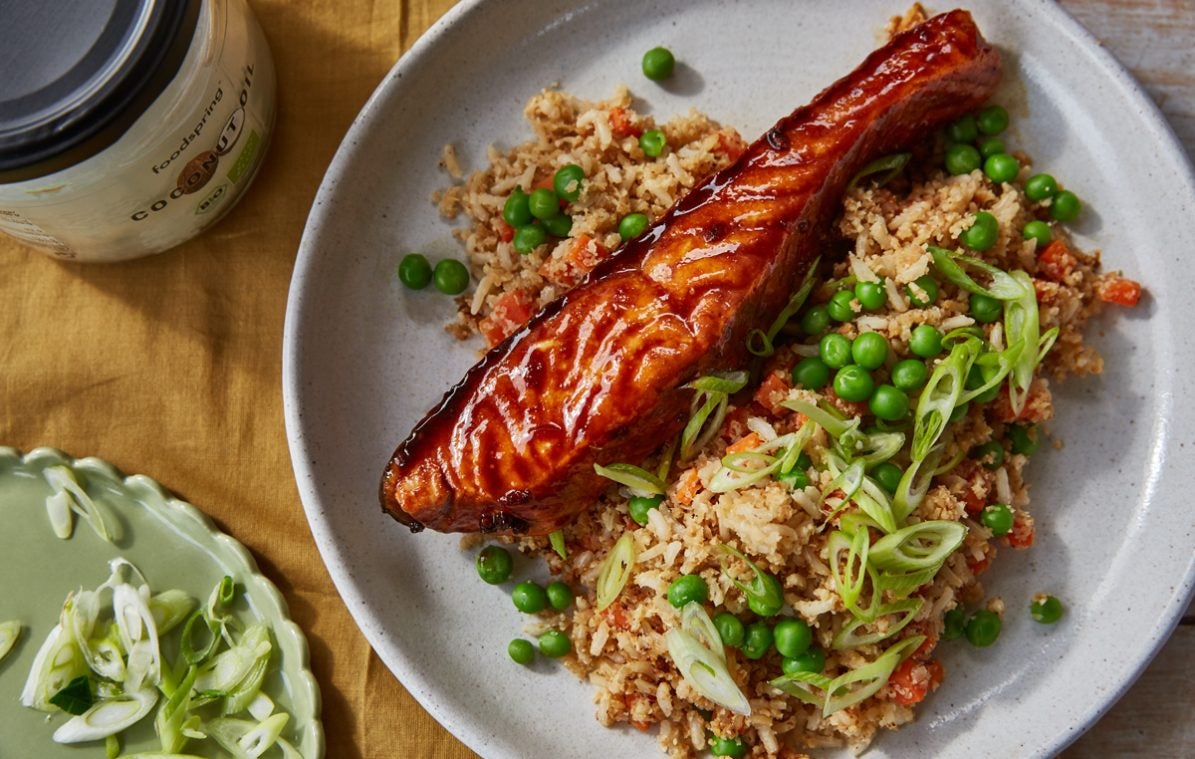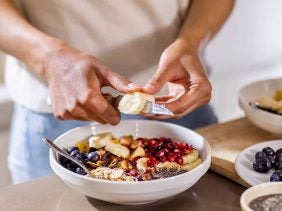What to Eat After A Workout
 © foodspring
© foodspring
If you’ve recently begun working out, or you’re returning to your previous activity levels, you may be surprised about one side-effect: how hungry you’re getting! Makes sense. The body is into homeostasis, which means that it likes things in balance. When you get into a certain habit—doing light exercises a few days a week, eating pretty much the same kinds of things every day, sleeping for about the same number of hours — it gets used to it, and likes the predictability. So when you start something new, like overhaul your diet, or drop into indoor cycling classes every day for a week, the body is going to ask for more energy to compensate for all the new energy it’s being asked to expend. That’s not a bad thing. It just means you’re finding a new equilibrium.
Same goes for people who work out regularly. If you frequently go the gym, are into weightlifting, are on a steady running schedule, or find time to hit the pool several times a week, you need to make sure your body has enough fuel to perform. And that might mean eating before and after your workouts, possibly in addition to your regular eating plan.
Refuel: Try our whey protein either before or after exercising.
Post work-out meal: The basics
Your post-workout meal is especially important. It’s the key to regenerating properly and keeps you going at full power in the future. After exercising, the first thing to do is to replenish your energy stores. Since your glycogen synthesis is at its highest directly after exercise — meaning the rate at which you process sugar — we recommend taking in quickly available carbohydrates immediately after your workout. Complex carbohydrates still should be your first choice for the rest of the day. Protein is also important after exercise, because as an important building block of the body it supports faster regeneration of your muscles.
Some examples of good post-exercise snacks include fruit, granola, and Greek yogurt; oatmeal and chopped pear; apple and nut butter spread; pita and hummus; scrambled egg on toast; and a banana and berries protein shake.
If you’ve gone particularly hard, or you’ve worked out several days in a row and are feeling it, our Recovery Aminos can supply your body with easily available carbohydrates and essential amino acids to help your muscles recover.
What to eat after a workout for muscle building
During exercise, your muscles break down or tear. That’s the way strength is built. When muscles repair themselves, they create more fibres, which is how you gain strength. It’s also why you want to be methodical in the way you strength train. Doing too much too frequently doesn’t give the muscles enough time to repair, and actually slows your progress — exactly what you don’t want to have happen! So be smart about your training. In addition to varying your weight training and ramping up in weight appropriately, we also recommend whey protein to support muscle building. It’s formulated to be easily utilized by your muscles for quicker absorption and healing. If you want your protein lactose-free, a vegan protein that combines different amino acid sources is perfect.
Related: Tips on nutrition for muscle definition
Making muscle building a goal of your overall diet
Listen, we love a nice, cold protein shake as much as the next person. But that’s not where healthy eating ends. Your body will respond best when you feed it consistent, healthy, balanced meals. You’ve probably heard the term “eating the rainbow.” That means getting a wide variety of colourful produce (the different colours can literally be indicative of nutritional load). The more balanced your diet, the better your body is supplied with vitamins, minerals, and trace elements.
And of course, taking in protein is a cornerstone of muscle building. But not all protein is created equal. There are two categories of food: those that contain complete proteins, and those that contain incomplete proteins. Taking a step back, protein contains a building block called amino acids. There are 20 in total, and of those, we get nine from food — which are called essential amino acids. Complete proteins are those that contain all nine. Animal products, including meats, poultry, fish, eggs, and milk products, plus certain plant-based foods like tofu, quinoa, and spirulina, fall into that category. But you don’t need to eat meat products in order to get complete protein. Legumes, beans, seeds, oatmeal, whole grains, nut butters, tempeh, and seitan are among the plant-based sources of protein. Even though they are not complete proteins, if you eat enough foods of different varieties throughout the day, the sum total of protein over the day will supply the protein that you need. Just know that the body can process only about 25 to 40 grams of protein at any one time, so it’s best to spread out your protein intake throughout the day.
Vegetables and fresh fruit should always be included, as well as carbohydrates. Chickpeas, for example, are perfect: they provide protein and carbohydrates at the same time – carbs help you reach your calorie surplus and provide valuable micronutrients.
Related: High protein vegan foods for your plant based lifestyle
Is it better to eat protein before or after a workout?
Scientists are still divided on whether eating protein after a workout is adequate or whether it’s also helpful to get it in before one. Fact is: It’s essential to get it after your workout in order to reach your targets. But especially if you’re trying to increase your muscle mass, you should eat enough protein throughout the day regardless of timing – including before your workout, if necessary.
But there are also studies that indicate that protein before a workout boosts protein synthesis and promotes muscle building while you exercise. In combination with easily digestible carbohydrates or BCAAs, it can provide additional energy for the workout.
More healthy living tips from foodspring:
- More performance in the gym through mobility training
- The #1 Reason Your Muscles Aren’t Growing
- 6 Surprising Effects Lifting Weights, According to Science
- Push & Pull – The Only 6 Moves Your Need to Know to Build Strength
Sources for this article
We at foodspring use only high-quality sources, including peer-reviewed studies, to support the facts within our articles. Read our editorial policy to learn more about how we fact-check and keep our content accurate, reliable, and trustworthy.

































